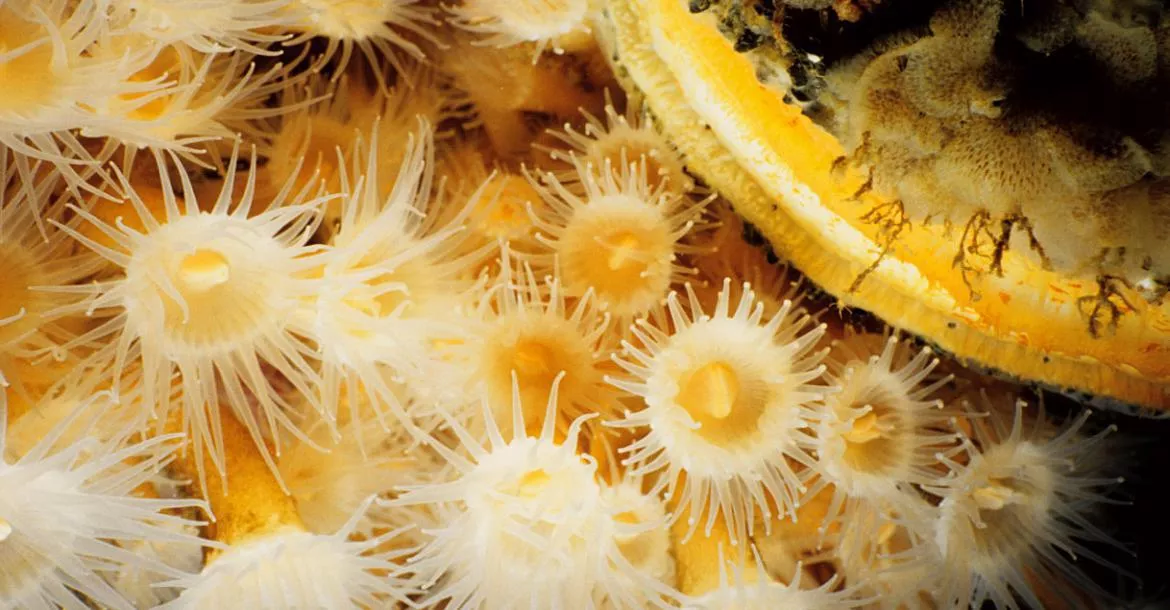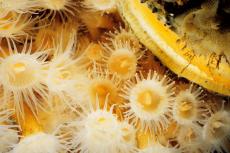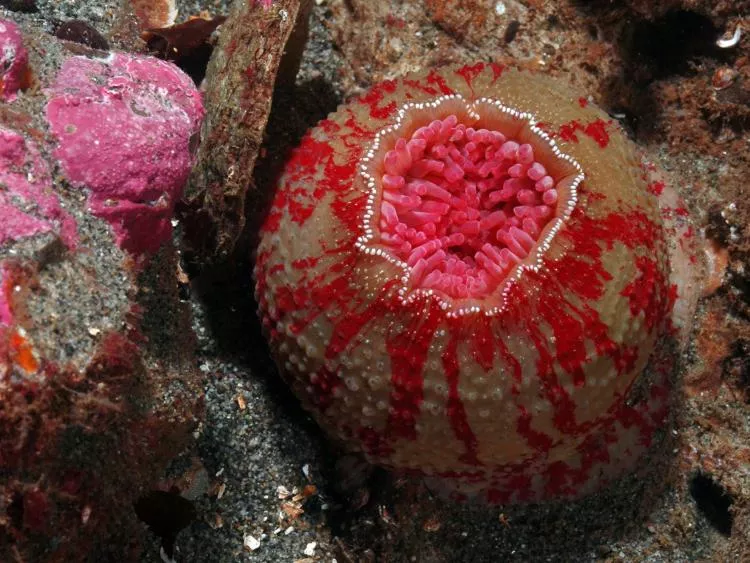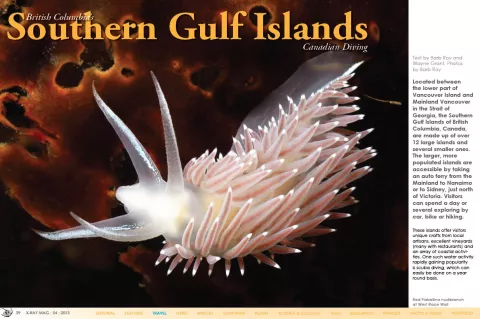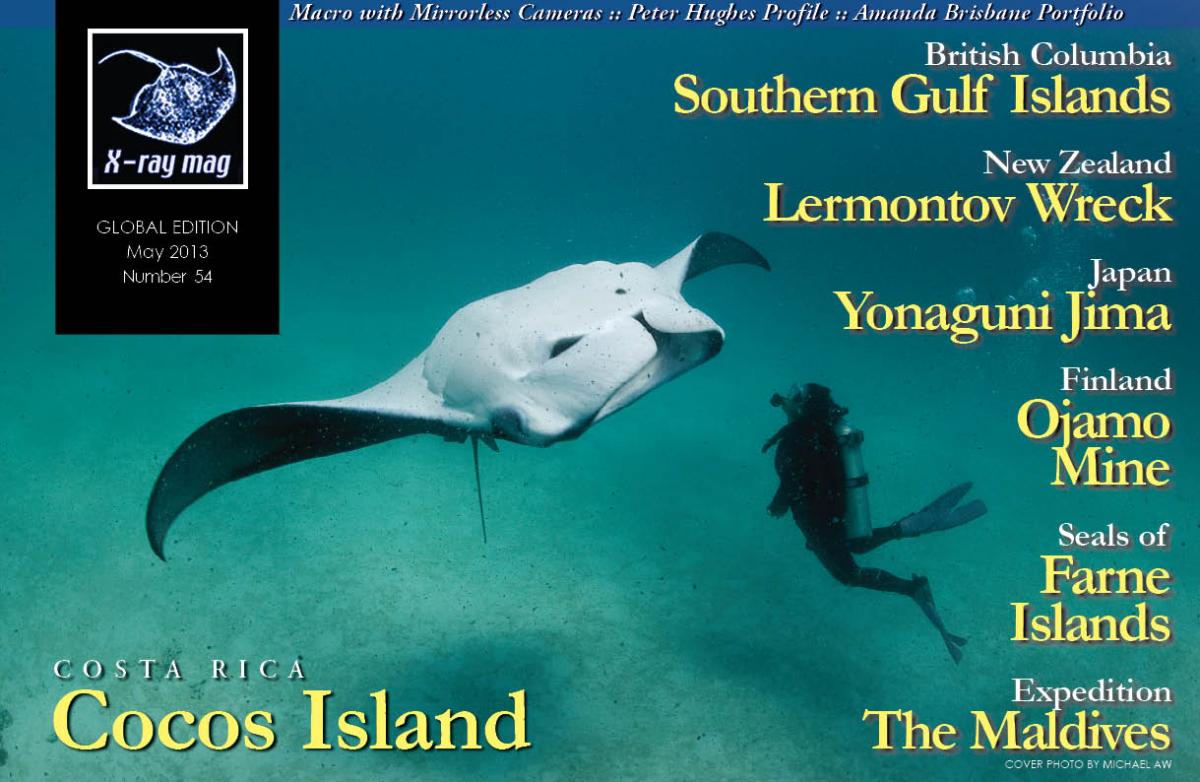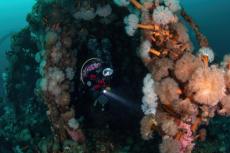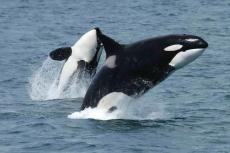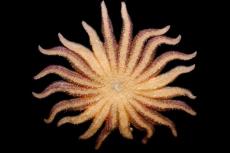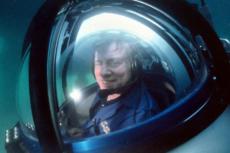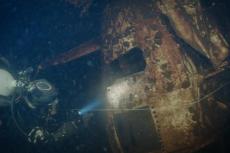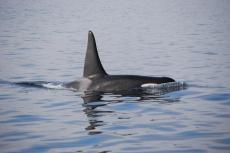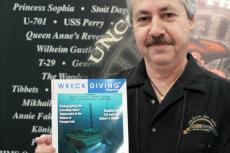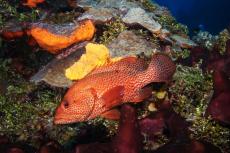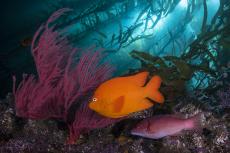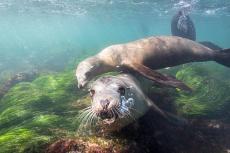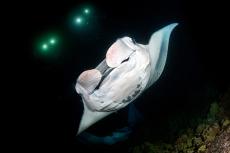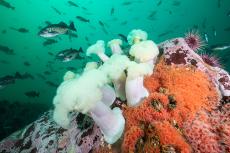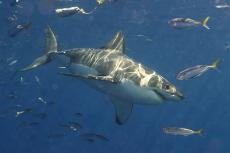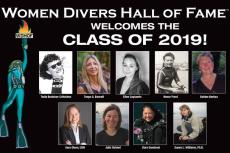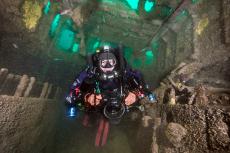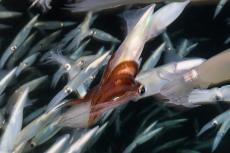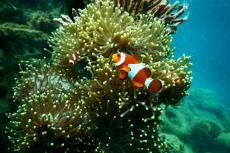Located between the lower part of Vancouver Island and Mainland Vancouver in the Strait of Georgia, the Southern Gulf Islands of British Columbia, Canada, are made up of over 12 large islands and several smaller ones. The larger, more populated islands are accessible by taking an auto ferry from the Mainland to Nanaimo or to Sidney, just north of Victoria. Visitors can spend a day or several exploring by car, bike or hiking.
Contributed by
These islands offer visitors unique crafts from local artisans, excellent vineyards (many with restaurants) and an array of coastal activities. One such water activity rapidly gaining popularity is scuba diving, which can easily be done on a year round basis.
There are several dive charter operators servicing the Southern Gulf Islands, offering two-tank day charters, with assistance in arranging or will provide accommodations. Top this with a commonly mild coastal climate, friendly people and you have the makings of a relaxing BC dive getaway.
PADI Master Dive Instructor, Scott Stevenson, from Pinnacle Scuba Adventures has been diving in the area for over 18 years. “We accommodate all levels of diving from beginner to rebreather and technical,” exclaimed Scott. “We will meet divers or pick people up as needed. Every group is different and we try to give each person the best experience both above and below the water.”
Together with business partner, Jessie Kunce, Pinnacle Scuba Adventures has been in operation for about three years. Scott also said, “Our most popular dive sites are three separate sites around Race Rocks (Victoria area). The first site and probably the most well known is West Race Wall.
This site is an amazing wall covered in macro life—from sponges and soft corals to basket stars and sculpins. It is an amazing dive site with almost limitless life and is comparable to popular sites like Browning Wall in Port Hardy or Row and Be Dammed on Quadra Island in Campbell River.
“The second site is Helicopter Rock. This is the best place to experience sea lions in all their glory! You can dive other parts of Race Rocks for encounters but Helicopter really is the best. It is a shallow dive with a huge kelp forest, at times with more than a hundred sea lions! It’s all about the interaction between them and the divers.
I constantly refer to them as big puppy dogs—playful and inquisitive. It’s hard for me to describe the feeling I get after years of being in the water with them. When I take someone, or a group of divers with me and we are bombarded with sea lions, the squeals of joy under the water and the smiles on the surface are always awesome.
“The third site is Great Race, where the lighthouse is. The small bay where the boat launch is located is the best place to dive. This is a common hangout for sea lions; however, the bottom is covered in colorful brooding anemones, lots of rockfish and greenling, as well as a few resident wolf eels and octopus.”
As an accomplished underwater photographer and dive guide, Scott enjoys West Race Wall for its diversity of life and great colors: “The amount of fish and invertebrate life inspire me; I simply love shooting there. This is one of my personal favorites I have dived many times and still get excited every time I go out there.”
Pinnacle’s dive boat is 32 feet long, handling eight divers and is equipped with a cabin, camera rinse bin and toilet. Their range stretches from Victoria to Sidney and Saanich Inlet and even around to Port Renfrew, on the west side of Vancouver Island.
“If a group wants to dive a particular place, we will take the boat to wherever they want to go,” added Scott. “We pride ourselves on our customer service, local dive site knowledge and versatility. We don’t offer rentals, however, we have very good relationships with the local shops and believe that clients can get what they need from the shops.”
When asked what other dive sites Scott likes to take his clients to, he replied:
“Swordfish Island is a very unique dive. The south end of the island has a naturally formed tunnel approximately 60ft long, 20ft wide and about 20ft deep. Because of the large amount of current flow in this area the tunnel is filled with life—red soft coral, brooding and plumose anemones, rockfish and nudibranchs. We also have several wrecks in the area other than the ones in Sidney. The Swordfish and the Barnard Castle are two often requested due to their age and unique pieces still left on the bottom.”
Chemainus
Another dive charter service with the option of accommodations is the joint efforts of Cedar Beach Lodge and 49th Parallel in the Chemainus area, south of Nanaimo. Andy and Virginia Lamb run the quaint bed-and-breakfast on Thetis Island offering divers and their traveling companions a quiet seaside environment with excellent views. The lodge has a drying room for gear and a hot tub for after the dives.
The dive charter portion of the relationship is conducted by Peter Luckham and his wife Simone. With over 12 years of diving experience, Peter tenders professional day adventures in Stuart and Trincomali Channels, which also include current dependent sites in Porlier Pass (the Point Gray, the Peggy McNeill, Alcala Wall).
Currently 49th Parallel uses a 17-foot boat, accommodating four divers with two dives per day. “Peter can still service all the usual sites,” informs Andy Lamb, “But can actually and efficiently go farther due to the smaller faster boat.”
Andy also told us he likes the underwater visibility best in the fall and winter months but assures it is usually good from late June through February too.
One of the many wreck dive selections Wayne and I enjoyed was the wreck of the SS Del Norte, at Canoe Islet in Porlier Pass. This historic vessel was a 190-foot long side-wheel passenger steamer that went down in 1868. Although there is not much structure left of the ship, you can still make out the paddle wheel, covered with life, nourished from the high currents in the area. Of course, we waited until the current stopped to dive!
Another site my daughter Tallen really liked was wreck of the Point Gray, a 105-foot long steel tugboat that ran aground in 1949. The tug lies upside down in Porlier Pass at Virago Rock, blending in with the natural kelp forest surrounding it. On her dive she observed huge lingcod, tiny Puget Sound king crabs and empty sea urchin shells. What was left of the remaining structure, including a few propeller blades, were coated with an assortment of invertebrate life!
Topside excursions
When we finished our diving we decided to check out the Shaw Ocean Centre in Sidney. This small public Aquarium was completed in June of 2009 housing 87 tons of seawater in 17 aquarium habitats. Resident critters on display represent marine life found living in this region. Two of our favourites were a wolf-eel and a giant Pacific octopus.
At the time of our visit the octopus was tending to a mass of eggs. Each egg was no bigger than a grain of rice! The thin delicate strands hung by the hundreds from within her rocky den on the ceiling. In the wild we have photographed octopus eggs with visible eyes in them! It was quite a treat to see some of the fish we were diving with the day before.
Sidney
Wrecks in the Sidney area include the GB Church and the retired HMCS Mackenzie, both placed as artificial reefs. The 175-foot freighter GB Church sits upright in 65-99 feet of water on the east side of Portland Island, scuttled in 1991.
During the early spring months, divers may find lingcod or cabezon guarding clusters of eggs on the decks of the GB Church and quite often octopuses under the hull on the bottom near the bow. I have always been fortunate to find several different types of nudibranchs and sculpins on this wreck. A diver can easily swim the length of the ship and even have time to check out the propeller as well.
The 366-foot Mackenzie was scuttled in 1995 and rests upright in 50-105 feet of water off Rum Island. We have experienced currents on several dives here, causing us to select calmer slack-current dive times (when the water stops to change direction). As with the Nanaimo reefs of steel, the Mackenzie is full of resident marine life, except these tend to thrive in the flow of currents.
During our trip to the Sidney area we stayed at the Sidney Pier Hotel and Spa. I found the hotel staff to be very helpful with local dinning and activity advice, and we liked the fact the hotel engaged in earth-friendly practices, committed to eco-friendly sustainability.
Another exhilarating activity in the southern region is ziplining. Adrena Line offers treetop excitement above 100 lush acres of diverse temperate rainforest in the Sooke area. When I brought my teenage granddaughter for a visit, we were treated to a day of ziplining through the treetops. What a blast!
Not long after we checked out Wild Play near Nanaimo, this time with my teenage grandson. Nanaimo’s location offered a four-level obstacle course in the trees to traverse. Again, we spent the whole day having a wonderful time of bonding. Places like this provide awesome activities to do with family members who do not dive.
Afterthoughts
With the amount of dives possible and the varied locations found in the Southern Gulf Islands region, I would advise several trips over time to see it all. Since we usually travel during off-season when water clarity is at its best, weather can be a challenge. Communicating with the dive and tour operators before you leave will assure you have a good experience upon arrival. ■
Associate editor and underwater photographer Barb Roy and Wayne Grant are dive writers based near Vancouver, Canada.

